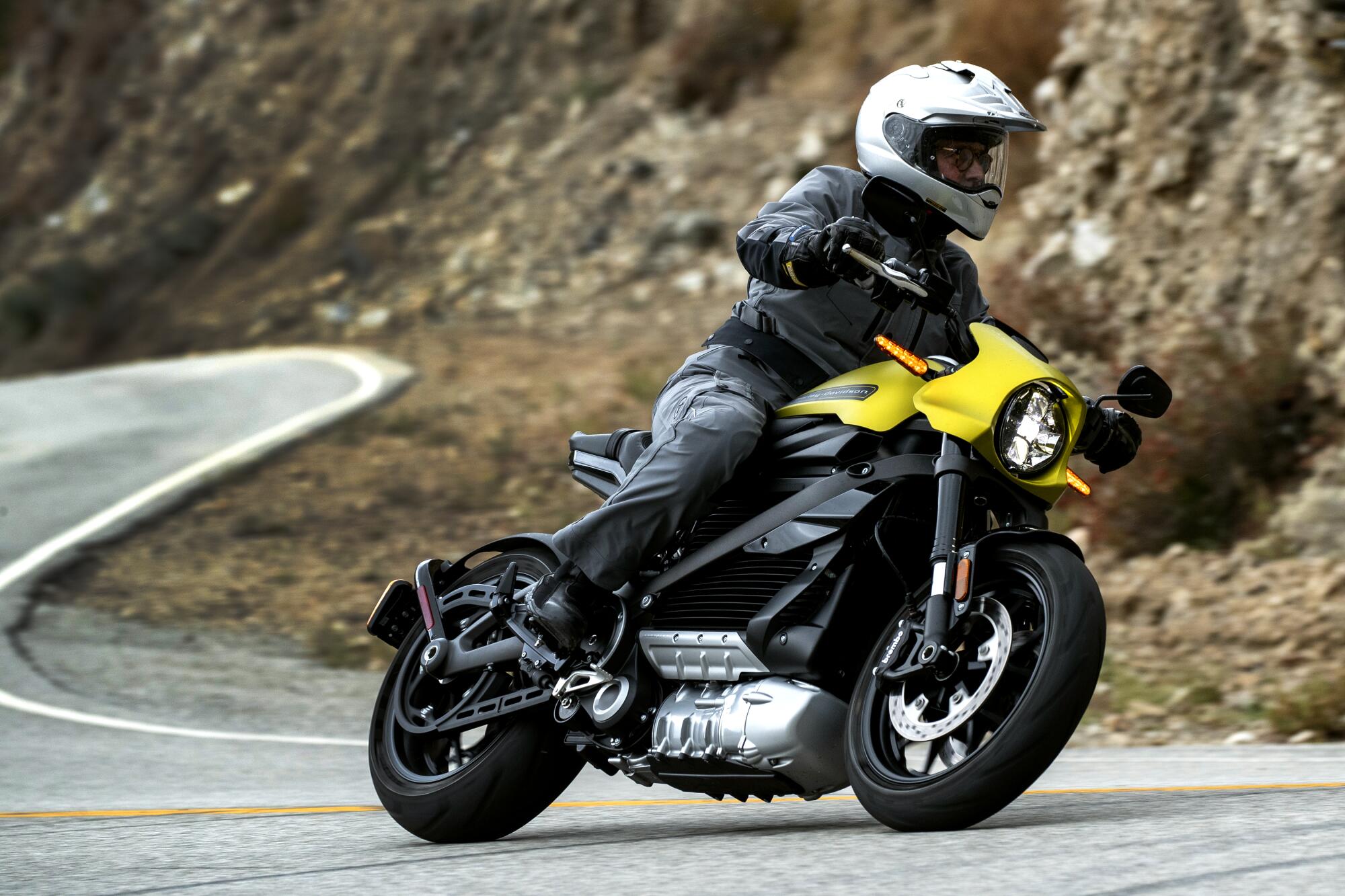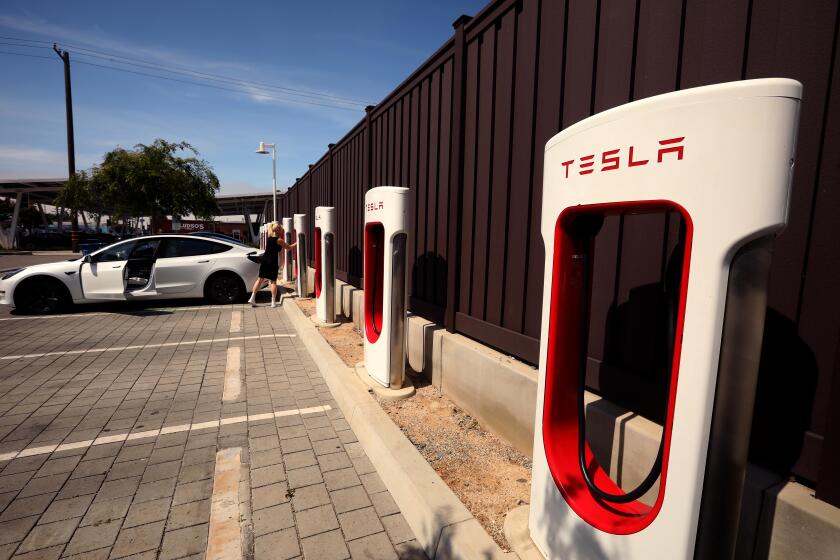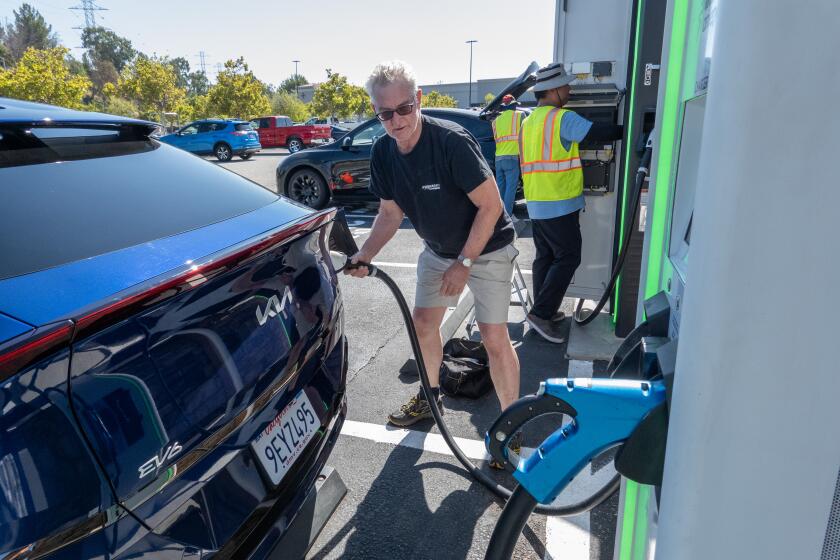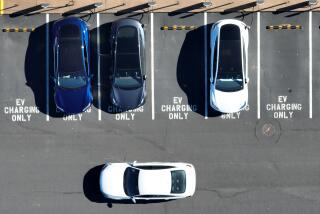
While Donald Trump dumps on electric vehicles and China becomes an “electric vehicle export behemoth,” the Biden administration aims to keep the budding EV industry in the United States alive and thriving.
On Thursday, the administration announced $2 billion in grants to builders of fossil fuel vehicles and their suppliers. The money will be used to convert those factories into EV vehicle and parts manufacturing operations, while preserving traditional auto worker jobs. The cash was approved by Congress as part of the so-called Inflation Reduction Act in 2022.
Aggressive and impactful reporting on climate change, the environment, health and science.
The U.S. auto industry is concentrated in the Midwest and the South, and most of the 11 grants announced by the Department of Energy will land in political swing states: Michigan, Ohio, Pennsylvania, Georgia. Factories in blue states Illinois, Maryland and Virginia will also receive grants, as will the red state of Indiana.
“This is a big deal, relatively speaking,” said Arun Kumar at consulting firm AlixPartners. “The timing is right because when you have some doubts about what the future is going to be, it’s good to have good news.”
By doubts, he’s referring to forecasts from his firm and others that show EV sales growth slowing down. He also said that a change at the White House this fall adds to uncertainty. It’s questionable “how the politics is going to work if you have a new administration come in and not prioritize the EV push,” he said.
Still, he expects the U.S. auto industry to remain committed to EVs, in large part because China has become the world’s largest EV maker and is growing fast, exporting around the world – Europe, Asia, Australia, Russia, and more, though not much yet in the U.S. Juiced in large part by low wages, long work hours and heavy state subsidies, the cars carry significantly lower price tags, and many models have won praise from automobile reviewers for high quality.
The U.S. responded in May by erecting a tall wall to keep the vehicles out, at least for now: a 100% tariff that obliterates China’s price advantage and then some. Europe followed with smaller but still stiff tariffs.
If China continues to push cheaper EVs — better for consumer wallets and better for the climate — it may be increasingly difficult for other nations to resist, even if domestic jobs are at stake. So automakers around the world know they can’t let up on making more EVs and making them less expensive, Kumar said.
California won’t receive any of the grant money, because no motor vehicle factories here have closed recently or are considered in imminent danger of shutdown.
Non-Tesla EV drivers will want to double-check their routes before planning a road trip that relies on the Supercharger network. Not all California locations are open to other makes of EVs yet.
Not that there’s much here to close in a state that was once a major motor vehicle manufacturer. Despite spending billions of dollars to subsidize EV makers and EV buyers in the state, only two major EV assembly plants remain in California: car maker Tesla, in Fremont, and electric bus maker BYD, in Lancaster.
The California Energy Commission gave an electric bus maker a $3-million grant toward a new factory in City of Industry, which opened in 2020. Three years later, the company, Proterra, shut it down and moved its manufacturing to South Carolina, before declaring Chapter 11 bankruptcy a few months later and splitting itself into pieces.
The Biden administration said companies receiving the grants agreed to retain or hire back large numbers of the traditional auto industry workforce, pledged to retrain them for EV work, and promised to pay them higher than average wages.
The grants provide up to 50% of the cost of a factory conversion, with the companies picking up the rest.
California has ambitious climate goals, including a pledge to ban the sale of new gasoline- and diesel-powered cars and light trucks by 2035.
The recipients include:
- General Motors: $500 million toward conversion of an internal-combustion Cadillac plant in Lansing, Mich., to build electric vehicles instead.
- FCA North America, an arm of Stellantis: $334 million to reopen a recently shuttered Jeep Cherokee plant in Belvidere, Ill., to manufacture thus-far unidentified EV models.
- Volvo: $280 million to build electric and fuel cell heavy duty Mack and Volvo trucks in Pennsylvania, Virginia and Maryland.
- Harley-Davidson: $89 million toward an electric motorcycle plant in York, Penn.
- Blue Bird Body Company: $79 million to build a new electric school bus line on the site of a former motor home manufacturer in Fort Valley, Ga.
- Cummins: $75 million to convert an internal combustion product line in Columbus, Ind., to make battery packs and other electric power-train parts.










